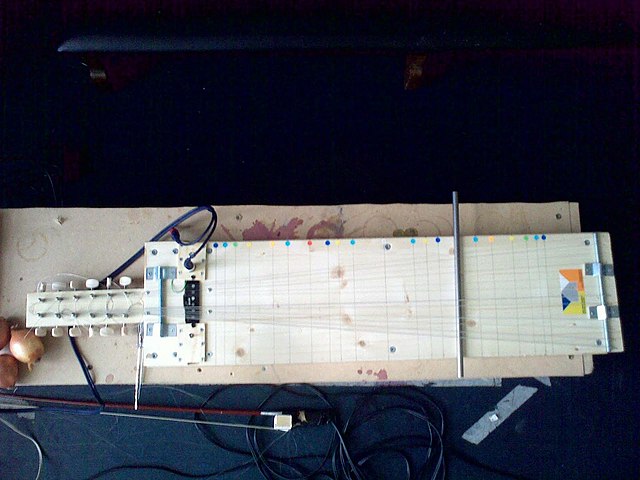A prepared guitar is a guitar that has had its timbre altered by placing various objects on or between the instrument's strings, including other extended techniques. This practice is sometimes called tabletop guitar, because many prepared guitarists do not hold the instrument in the usual manner, but instead place the guitar on a table to manipulate it.
A prepared guitar
A Home Swinger, 3rd bridge zither
A prepared piano is a piano that has had its sounds temporarily altered by placing bolts, screws, mutes, rubber erasers, and/or other objects on or between the strings. Its invention is usually traced to John Cage's dance music for Bacchanale (1940), created for a performance in a Seattle venue that lacked sufficient space for a percussion ensemble. Cage has cited Henry Cowell as an inspiration for developing piano extended techniques, involving strings within a piano being manipulated instead of the keyboard. Typical of Cage's practice as summed up in the Sonatas and Interludes (1946–48) is that each key of the piano has its own characteristic timbre, and that the original pitch of the string will not necessarily be recognizable. Further variety is available with use of the una corda pedal.
Andrea Neumann's preparations, where pieces of cutlery are placed between piano strings



